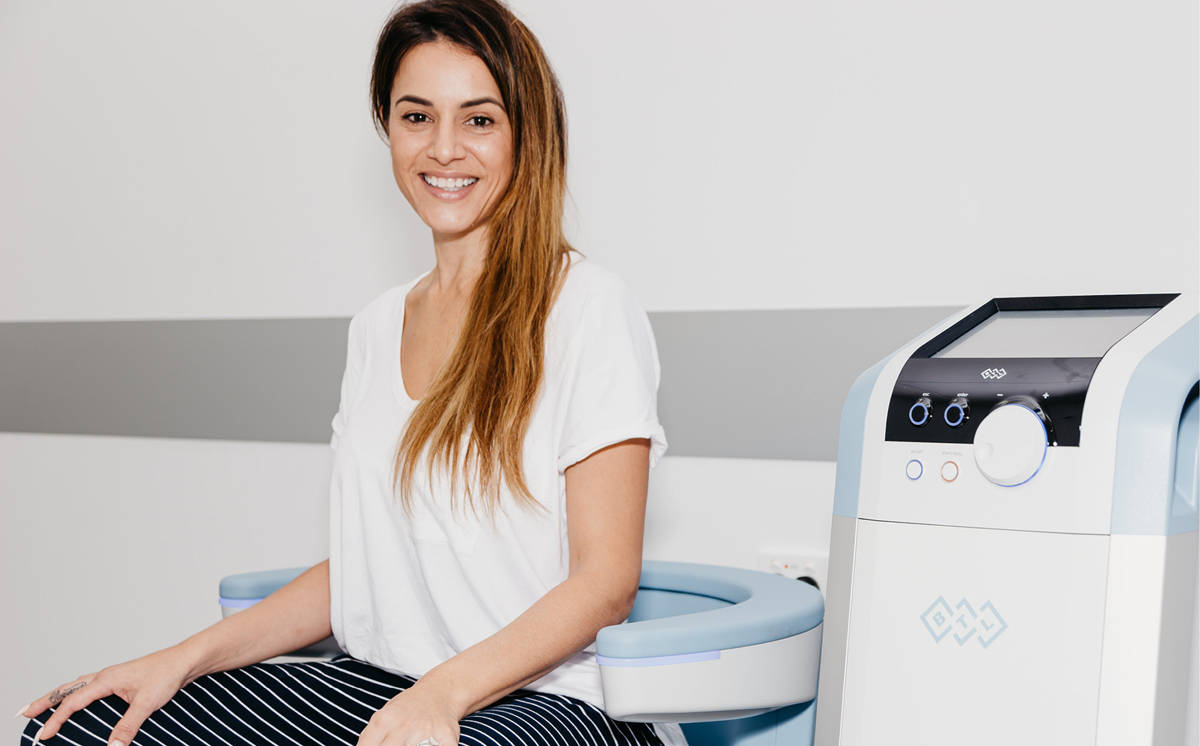
Urinary incontinence and how Emsella can help
Urinary Incontinence. We said it, those big scary words that no one likes to admit impacts their life. Instead they feel shame and embarrassment. It’s time to break that stigma – we want to empower people to seek help and regain control!
Currently urinary incontinence is under reported, under screened and under treated. Meaning many people are suffering in silence, which can have a significant effect on their psychological and emotional wellbeing. Some reports state that 70% of people who suffer, don’t seek treatment. They might feel embarrassed talking about it to their medical practitioner, or they feel it’s a normal part of ageing and childbirth, or they’re just simply unaware of what treatment solutions are available.
What exactly is urinary incontinence?
There are a few different kinds of incontinence, such as stress, urge, and mixed. It can affect women and men at different points of their lives. For instance, stress incontinence is defined as involuntary urine leaking with anything that might increase the pressure inside the abdomen like laughing, sneezing, running and jumping. Pregnancy, childbirth, menopause, obesity and prostatectomy are also major contributing factors. It’s estimated that up to 80 women a year after childbirth will have some pelvic floor muscle (PFM) weakness.
While urinary incontinence is defined as involuntary urine leaking after having an urge to go which can not be deferred. It’s likely to be due to detrusor overactivity, or what we call overactive bladder and is usually associated with and preceded by urgency, frequency, and nocturia. Common causes are age related urogenital atrophy, anxiety, UTI’s and benign prostatic hypertrophy.
We want to start the conversation. If you’re experiencing urinary incontinence due to any of the following factors we urge you to seek help.
- Sneezing
- Coughing
- Lifting something heavy
- Sudden movements
- Inability to hold urine after a strong urge to void
So what can be done about it?
Lifestyle changes can be made such as losing weight, reducing alcohol and caffeine, along with limiting fluid intake and constipation management.
There is also medicine that can assist, however, as with all prescribed medication efficacy and side effects must be discussed with your physician.
PFMT or pelvic floor muscle training, otherwise known as kegel exercises have been shown to improve stress incontinence when done correctly. Such as, engaging the correct muscles for a minimum of six seconds, followed by relaxing and repeating a minimum of eight times. Then repeat three times per day for at least three months.
Bladder training, vaginal electrical stimulation and surgery are all possible options, however, all have their own draw backs. Such as infection, pain and burns.
Challenges with completing pelvic floor exercises
Firstly, if you’re completing them on your own, it can be hard to know if you’re actually doing the exercises correctly, and holding a maximum voluntary contraction. A supervised program can be just as challenging, as the availability of such specialty Physiotherapists is limited. And as a patient you need to do homework! Like actually doing the exercises three times a day.
What’s our answer? Emsella!
BTL Emsella uses high intensity focused electromagnetic technology (HIFEM) that passes through the pelvic floor muscle motor neurons triggering supramaximum contractions.
In just one session over 11,000 supramaximum contractions are delivered, which is the key factor in ‘re-educating’ the pelvic floor muscle to contract as it should.
The supramaximal contraction builds and holds much stronger tension than maximal voluntary contractions, making each session more powerful than a three month pelvic floor exercise program.
Emsella Treatment Plan
Patients require a minimum of six sessions, twice a week for sustained results that can last up to six months. Following the initial treatment plan we recommend maintenance sessions, two every six to eight months.
We know making that first phone call can be hard, but just think about getting a better nights sleep because you’re not having to go to the bathroom so often. Think about being able to run, jump and play with your children. Or even just laugh with friends without fear of leakage!
If you think Emsella could help you, contact us on 6336 7250 to arrange a consultation.
